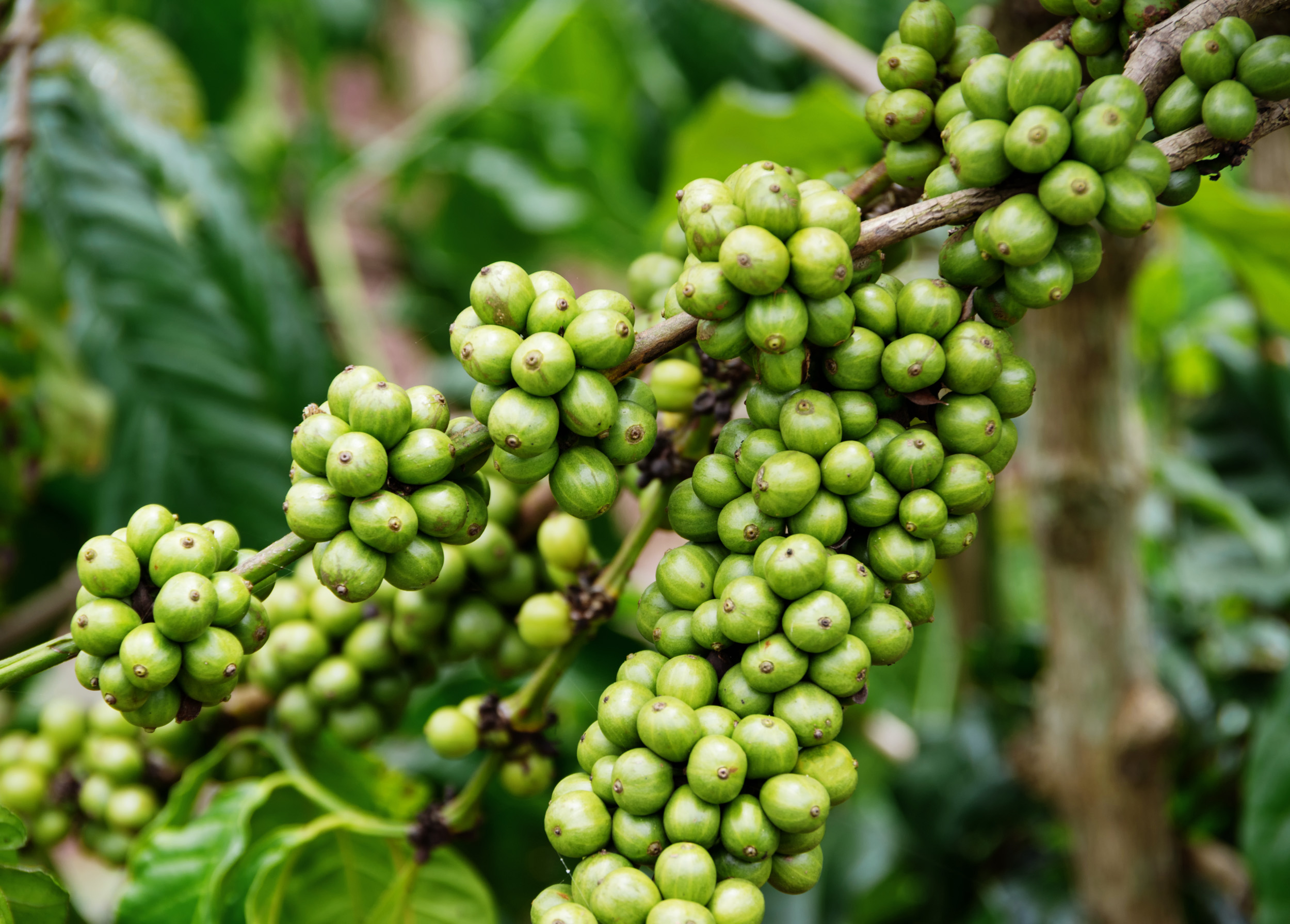Typica and Bourbon, along with the varieties descended from them described in Lesson 6.02, are highly susceptible to the devastating fungus Hemileia vastatrix, or coffee leaf rust. Leaf rust was first identified in Brazil in 1970 on a farm in Bahia. Within just four months it had infected almost all of Brazil’s coffee plantations (Zambolim 2016). Outbreaks of rust in Brazil can reduce productivity by 30% or more (Pozza et al 2021). To combat leaf rust, many growers have turned to cultivating rust-resistant varieties.
 Coffee leaf rust is one of coffee’s most fearsome pathogens
Coffee leaf rust is one of coffee’s most fearsome pathogens
Catimors
The Catimor group of varieties was developed by plant breeders at the Centro de Investigação das Ferrugens do Cafeeiro of Portugal (CIFC) by crossing the Timor Hybrid with Red Caturra. The Timor Hybrid, a naturally occuring cross between arabica and canephora, benefits from the latter’s rust resistance, but its flavour is considered inferior to that of pure arabica strains. By backcrossing with Caturra, the researchers were able to create rust-resistant varieties with improved flavour.
Seedlings from these crosses were sent to Brazil for development and testing in the early 1970s and then released to growers and plant breeders around the world (Zambolim 2016). Multiple rounds of breeding and selection from these plants in different countries have resulted in a large number of different Catimor varieties.
 Catimor varieties tend to be highly productive
Catimor varieties tend to be highly productive
In Brazil, Catimors are suitable for dense planting at moderately high altitudes, where they perform similarly to Catuaí. However, in some regions, Catimor plants seem to die back after several productive years (de França Souza et al 2004). They are also not hardy at higher latitudes (Carvalho 2007).